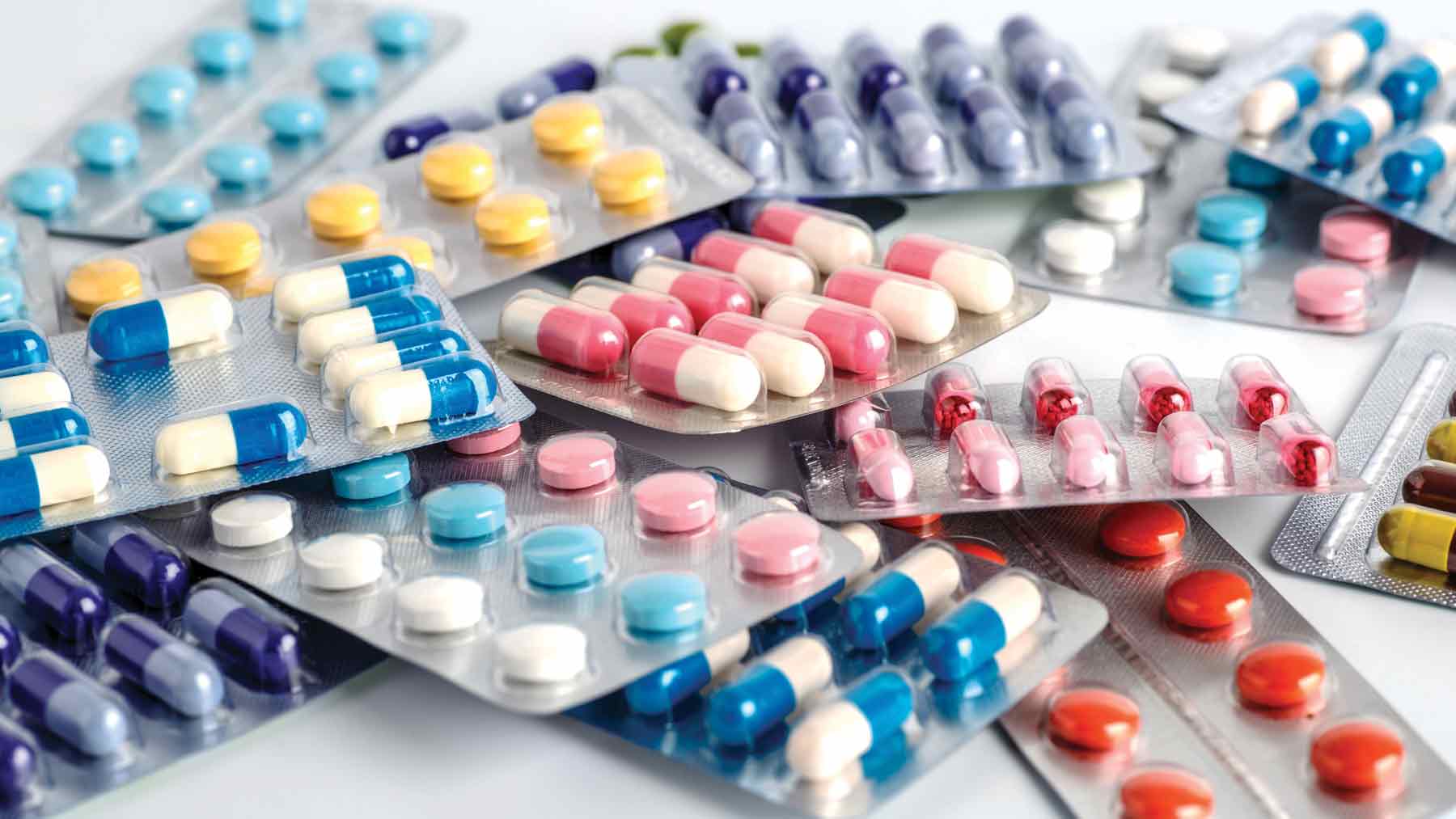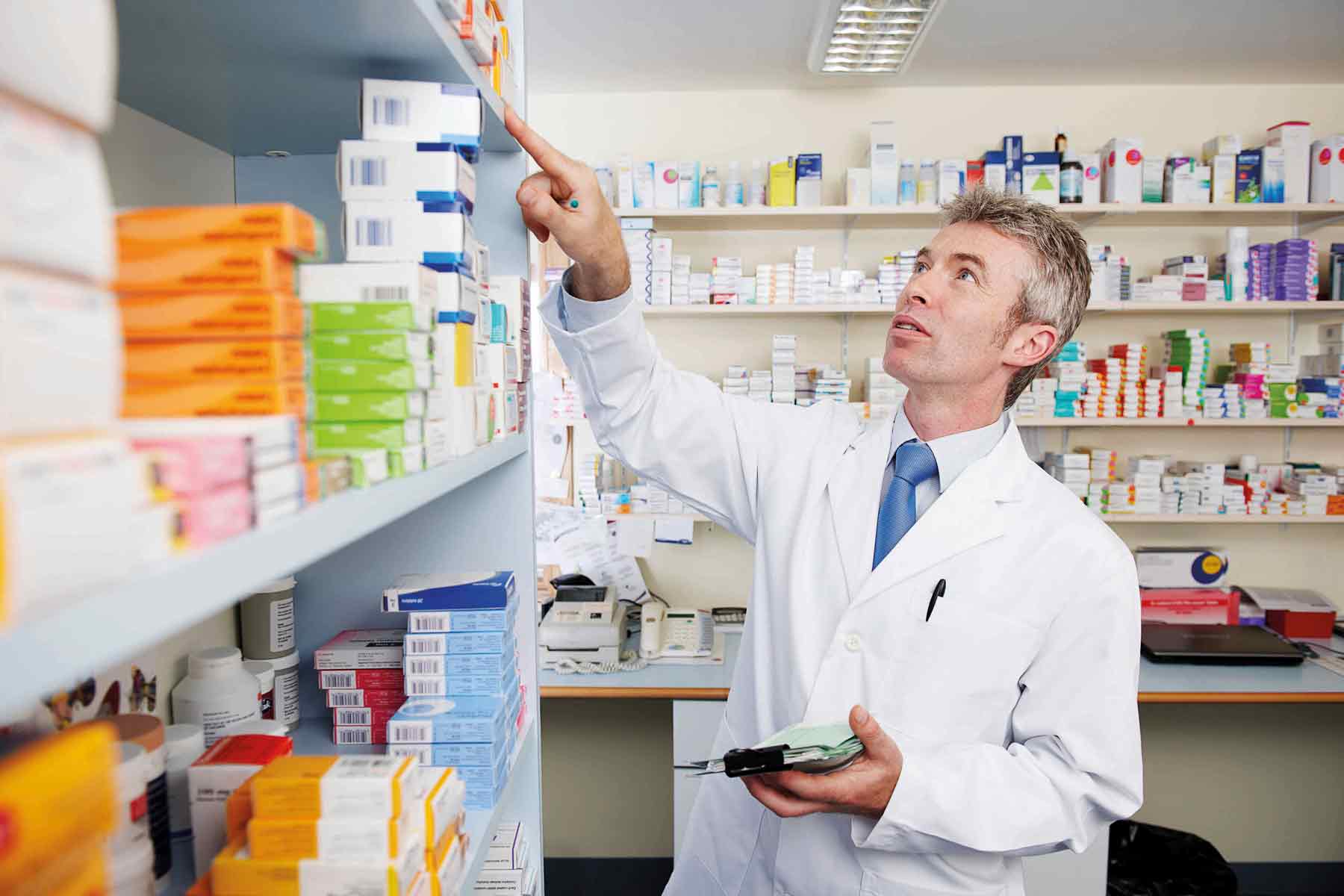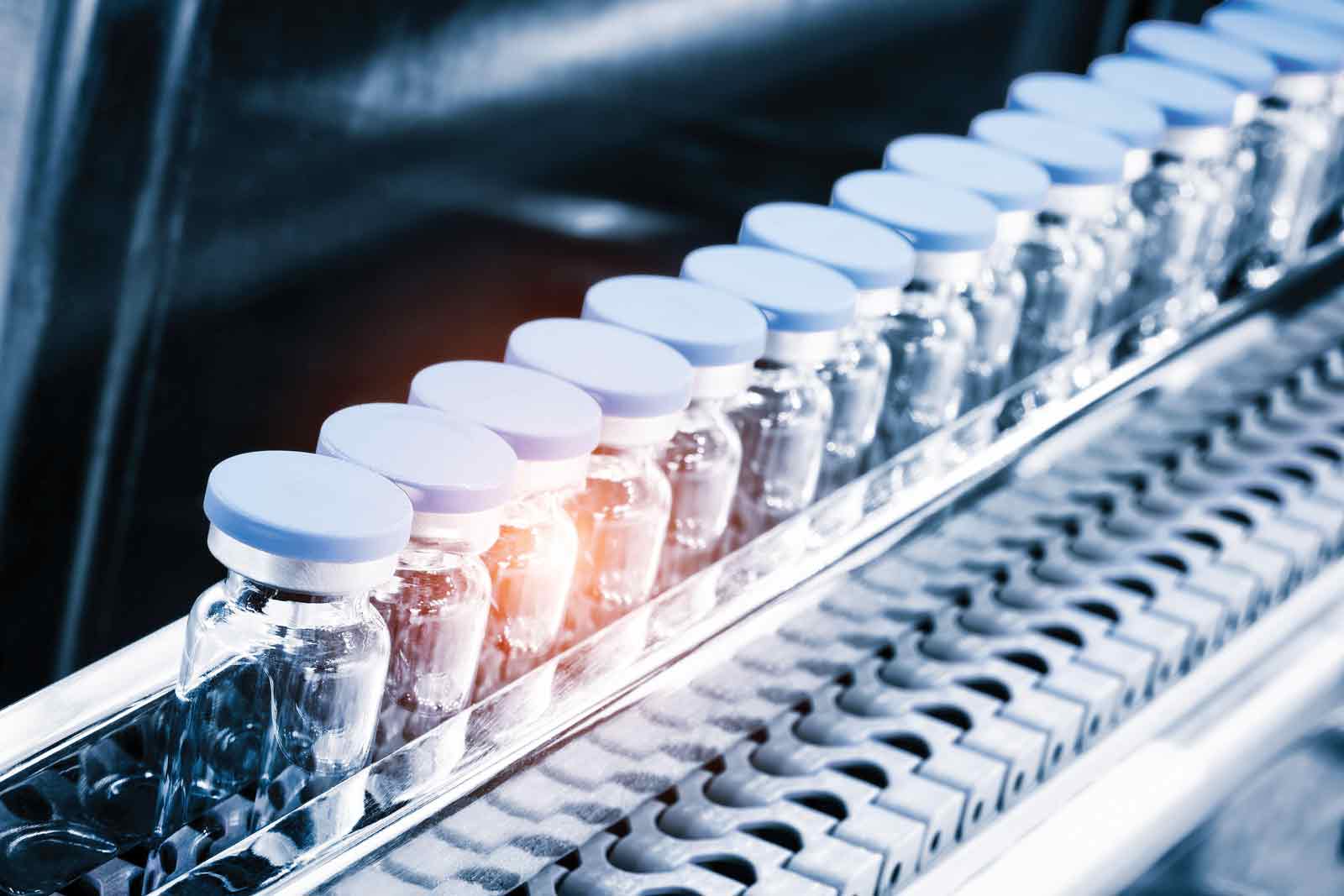European healthcare providers and their patients have been grappling with medicine shortages for years, an issue that has slowly been morphing into a chronic ailment before reaching a fever pitch last winter.
A triple whammy of respiratory infections hit Europe at the onset of the cold season in 2022, with the European Centre for Disease Prevention and Control (ECDC) warning that many EU countries were recording higher-than-normal rates of respiratory infections due to the high circulation of three common winter viruses: influenza, respiratory syncytial virus, and Covid-19.
While not uncommon at that time of year, the ECDC said the wave of respiratory illnesses began earlier than usual, was infecting a high number of children, and coincided with a steep rise in strep A throat infections impacting youngsters. Health authorities became worried as more children than usual were dying from strep A infections after developing an invasive variant, which occurs when the bacteria enters the lungs or bloodstream.
As the number of infections soared, doctors, pharmacists and patients were left in a pinch, struggling to obtain the medications needed to treat these infections: life-saving antibiotics. Throughout the bloc, health officials began to sound the alarm as it became clear that, given the jump in the number of infections, there were simply not enough antibiotics to go around.
Antibiotics are lifesaving. But we treat them as though they were T-shirts or trousers
Ilaria Passarini, secretary-general of the Pharmaceutical Group of the European Union (PGEU) lobby for EU community pharmacists, says that, while PGEU had been calling for a solution to medicine shortages for years, the situation last winter was much more acute.
“More patients were coming to the pharmacy asking for antibiotics, which were not available in the brand [nor] in the formulation that was prescribed,” she says. “Many pharmacists had to send patients back to the doctor to ask for an alternative.” This led, in many cases, to a waiting time of several days or even weeks.
Amoxicillin, one of the most commonly used antibiotics, used to fight a broad range of bacteria – from the ones causing strep A and respiratory infections, to skin, blood or kidney infections – was among the worst-hit. Last December, France’s National Agency for Drug Safety (ANSM) warned that amoxicillin, especially in preparations for children, was among 277 drugs in short supply. As a stopgap solution, the agency later allowed French pharmacists to compound available preparations to make them easier for under-12s to ingest. Shortages were also reported in Spain, Italy, Germany, Austria and the United States. By mid-December, the EU’s drug regulator, the European Medicines Agency (EMA), launched an official investigation into what was causing shortages, as it confirmed that 25 out of 27 EU countries lacked critical drugs like amoxicillin and other vital antibiotics, as well as medications crucial for patients fighting cancer, diabetes, heart disease and other serious illnesses.

Passarini says that, where national regulations allowed, pharmacists were able to step in by compounding medications or proposing alternatives. But this was not without consequence for people fighting illness.
“Medicine shortages can have a detrimental impact on people’s health, either because the disease worsens or because of side effects from less suitable treatments,” says Ancel·la Santos Quintano, a senior health policy officer for EU consumers’ lobby BEUC. Alternative treatments can also be more costly, or negatively interact with other medications a patient may be taking. According to France’s League Against Cancer, many oncologists say that substituting a cancer patient’s usual medication can worsen the prognosis.
As shortages came to a head earlier this year, EU capitals rushed to adopt last-minute contingency plans, including stockpiling. The EU Commission, which said the crisis was caused by a surge in demand colliding with manufacturing and sourcing issues, also doubled down on the problem in an attempt to get a grip on Europe’s flailing pharmaceutical supply chain. In July, the Commission said it was taking pre-emptive action to be “better prepared” for the coming winter season. This included getting companies to increase production of “key antibiotics”, boosting the EMA’s supply and shortage-monitoring capacities, and drawing up a list of EU-critical medicines.
Set to be published by year’s end, the list will identify medicines “for which continuity of supply should always be guaranteed”, an EMA spokesperson says, adding that it will be based on six existing national lists that all EU Member States will assess.
We need to have a secure supply chain, especially for critical medicines
Passarini says it is high time authorities took action on an issue that has plagued them for years, often putting them on the receiving end of patients’ frustration. “Pharmacists are the face of the problem; it is up to them to find a solution, but in most cases they don’t know why a medicine is not available,” she says. PGEU, which represents more than 400,000 community pharmacists in all EU countries, except Lithuania, has been surveying shortages since 2019 and has reported issues with antibiotic supplies every year since. The situation for hospital pharmacists is just as dire. In its 2023 survey, the European Association of Hospital Pharmacists (EAHP), said 95 per cent of in-hospital pharmacies across 36 European countries reported drug shortages last year, an issue they’ve been grappling with since the organisation first began polling members in 2013.
When it comes to antibiotics, however, the murky and convoluted nature of globalised pharmaceutical supply chains means there is no quick and easy fix. Most EU-based stakeholders don’t have much control over supply lines. An overwhelming majority depends on factories in India and China for the production of the active pharmaceutical ingredients, or APIs, with which EU drug companies then make antibiotics.
Thomas Porstner, a board member of GIRP, the EU association of pharmaceutical wholesalers, says that their members, too, are notified about shortages on “very short notice and usually without any information about any of the causes”. The situation with antibiotic supplies, he adds, remains “precarious”.

According to Passarini, the concentration of manufacturing capacities in a small number of producers in China and India increases risks of supply shortcomings and is “one of the main causes behind shortages”.
For Ulrike Holzgrabe, a professor at the Institute for Pharmacy and Food Chemistry at the University of Würzburg in Germany, this means that despite being vital medications, antibiotics are today produced under the same conditions, and subjected to the same pressures, as any other commodity.
“Antibiotics are life-saving. But we treat them as though they were T-shirts or trousers,” she says. The back-and-forth shipping and repackaging gymnastics of putting a single pack of pills together, she adds, makes it all the more difficult to act in case of a supply chain snarl-up. “It is not a straight line from API production to an injection capsule or a tablet.”
A majority of antibiotics today are generic off-brand medicines which EU countries have consistently sought to purchase from manufacturers at the lowest price possible. While this eases social security budgets, it has ultimately led to a just-in-time antibiotic production chain where manufacturers seek to boost output as far and as cheaply as possible.
“Our manufacturing sites run 24/7, so when there is a surge in demand, it is challenging to ramp up production to meet it,” says Adrian van den Hoven, director general at Medicines for Europe, which represents the generic drug companies that supply around 85 per cent of Europe’s antibiotics.
Antibiotics, he adds, are at “particular risk” of shortages because “they are extremely complex to manufacture, the price is extremely low, and the market is very consolidated. A recipe for disaster.”
Medicine shortages can have a detrimental impact on people’s health
Ivan Lugovoi, assistant professor of pharmaceutical supply chain management at Kühne Logistics University in Hamburg, who has researched drug shortages in the US extensively, says there are two surefire ways to prevent them: “Either you have stocks or you have spare [manufacturing] capacity. And this price pressure does not allow companies to keep this spare capacity, because they need to be as efficient as possible.”
This race to the bottom on generic drug prices has many other ways of backfiring. It creates lopsided access to medicines within the EU single market, as companies prioritise selling to the highest bidder, or pull medicines from non-profitable markets altogether – in what often punishes the bloc’s poorest capitals. Big Pharma companies have also been fined for hindering the release of cheaper generic alternatives to their branded medicines.
The slew of proposals that Brussels has dished out since the start of the year aims to fix what many in the drug industry agree is a broken medicines market.
An ambitious reform to overhaul the bloc’s main pharmaceutical law, unveiled this spring, is part of these efforts. Belgium, which will take the helm of the EU Council at the start of next year, has said it will make the pharmaceutical reform and medicine shortages a main focus of its presidency.
Despite being welcomed by pharmacists and wholesalers, key proposals to require companies to give early notifications on shortages or product withdrawals have raised hackles among pharma executives – in what sets the scene for fierce and protracted negotiations to redefine the rules governing one of the EU’s leading economic industries. But with shortages still plaguing the bloc, officials in Brussels recognise the need for more immediate action. As the bloc readies for a new winter season, the Commission says the EMA will take on a stronger role in supply monitoring and disease forecasting, as well as upping its co-ordinated response efforts. While it says current data suggests that antibiotic supply seems to “generally match demand,” it warns that this forecast was contingent “on the compliance by relevant companies with their legal obligation to ensure supply and their ability to adapt”.

In October, the Commission also took up a Belgian-led proposal, backed by 18 other EU capitals in May, for a Critical Medicines Act which, among other things, allows EU countries to share stocks during shortages (but only as a last-resort measure); to jointly purchase antibiotics; to set up “donation channels” with countries in the southern hemisphere exiting winter illness season; and, crucially, to encourage local production of antibiotic APIs, for which the EU “entirely depends on one country or a limited number of manufacturers”.
“The Covid-19 pandemic and the Russian military aggression against Ukraine exposed Europe’s supply chains dependencies and the risk that economic dependency could be weaponised,” Commission vice-president Margaritis Schinas said at the time, adding that ensuring access to medicines in the EU was “fundamental”.
The EU’s last large-scale factory producing API for antibiotics like amoxicillin and penicillin is in Kundl, Austria, and is run by Sandoz, the generics branch of Swiss pharmaceutical giant Novartis. Other antibiotic factories are located in Spain, Portugal, France, Italy and Romania but, over the last decade, the EU has gone from being a leading manufacturer of antibiotics to an import-dependent region for critical medications.
Public health experts, pharmacists and others agree that diversifying and making the pharmaceutical supply chain more transparent will make it more resilient to risks, and that, while it won’t be simple, getting the industry to boost domestic production of the most critical antibiotics – and to create new ones to fight growing antimicrobial resistance – is part of the fix.
It would be better if we were a little bit more independent so that we could react faster instead of waiting for what is produced in India or China
“We need to have a secure supply chain, especially for critical medicines,” Passarini says. “Reshoring is a way to do that but it comes with costs,” she adds, referring both to the environmental impacts of API production and to drug prices, adding that these should be “proportionate to the security we gain”.
While looser environmental rules are one big reason why drug companies have moved production to China and India over the last decades, Holzgrabe, the pharmaceutical professor at the University of Würzburg, says the main determinant is economic – giving us cheaper antibiotics, but “no control” over supplies.
“It would be better if we were a little bit more independent so that we could react faster instead of waiting for what is produced in India or China,” she says. Efforts to boost local antibiotic production in Europe are already under way. In 2020, Sandoz struck a €175m deal with the Austrian government to shore up antibiotics production in its manufacturing site at Kundl. In exchange for a public investment of around a third of the deal, Sandoz committed to keep penicillin API production active over the next 10 years. The move followed news that France’s largest pharmaceutical company, Sanofi, had announced ambitions to create a new European API manufacturing champion, EuroAPI. But last month, the purported champion said that, amid continued downward pressure on prices, it was not selling enough.
Van den Hoven says many generic drugmakers are ready to invest in local antibiotic production, but need appropriate support, including that EU countries rejig their drug purchasing policies and put security of supply, rather than low prices, at the centre.
Ultimately, many supply chain actors and health policy experts agree that a broader rethink of the EU’s pharmaceutical market is urgent if Brussels is to secure sufficient and affordable access to medicines, including vital antibiotics.
Sign up to The Parliament's weekly newsletter
Every Friday our editorial team goes behind the headlines to offer insight and analysis on the key stories driving the EU agenda. Subscribe for free here.